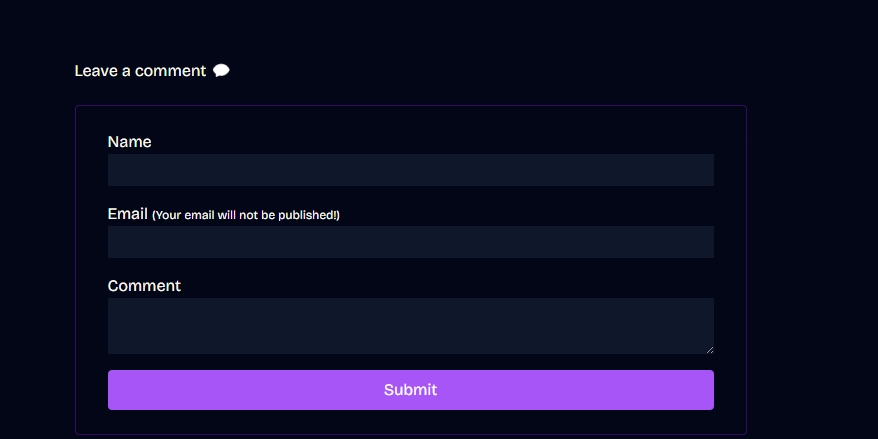UNASPRO Shared Drives and Docker volumes mount
How to Mount Unaspro NFS Shares as Docker Volumes If you're using a Unifi Unaspro NFS server and want to leverage it for persistent storage in your Docker containers, this guide will walk you through the process. This approach allows your containers to access shared storage that persists beyond container lifecycles. Prerequisites A Linux server with Docker installed A Unaspro NFS server on your network Basic understanding of Docker and NFS Step 1: Verify Your NFS Exports Before attempting to mount anything, it's crucial to verify what paths your Unaspro server is actually exporting. The Unifi dashboard might show one path, but the actual exported path could be different. Run this command to see the available NFS shares: showmount -e YOUR_UNASPRO_IP For example: showmount -e 10.1.1.1 This might return something like: Export list for 10.1.1.1: /volume1/.srv/.unifi-drive/[Shared Drive Name]/.data [YOUR_SERVER_IP] Important: Note the exact path shown here. This is the actual path you'll need to use, not what might be shown in the Unifi dashboard. Step 2: Create a docker-compose.yml File Create a docker-compose.yml file with the following content: version: '3' services: your-service: image: ubuntu # or any image you prefer command: tail -f /dev/null # Keeps the container running volumes: - nfs-data:/mount/point # Add other container configurations as needed volumes: nfs-data: driver: local driver_opts: type: nfs o: "addr=YOUR_UNASPRO_IP,rw,nfsvers=3,nolock" device: ":/EXACT_PATH_FROM_SHOWMOUNT" Replace: YOUR_UNASPRO_IP with your Unaspro server IP (e.g., 10.10.1.1) /EXACT_PATH_FROM_SHOWMOUNT with the path you got from the showmount command (e.g., /volume1/.srv/.unifi-drive/[Shared Drive Name]/.data) /mount/point with where you want the files to appear inside your container Step 3: Start Your Container Run the following command to start your container: docker compose up -d Step 4: Verify the Mount Check if your container is running: docker compose ps If it's running, you can access the container and verify the mount: docker compose exec [Your Docker Container name] bash # Once inside the container, check the mount: df -h # or mount | grep nfs # or ls -la /mount/point Try creating a test file to verify write access: echo "Hello from Docker" > /mount/point/test_file.txt Common Issues and Solutions [TODO] Conclusion Mounting Unaspro NFS shares as Docker volumes provides a convenient way to have persistent storage for your containers. The key is to verify the exact export path and use the correct mount options. This approach allows you to: Share data between containers Persist data beyond container lifecycles Leverage your existing Unaspro storage infrastructure Have you used NFS with Docker? Share your experiences in the comments!

How to Mount Unaspro NFS Shares as Docker Volumes
If you're using a Unifi Unaspro NFS server and want to leverage it for persistent storage in your Docker containers, this guide will walk you through the process. This approach allows your containers to access shared storage that persists beyond container lifecycles.
Prerequisites
- A Linux server with Docker installed
- A Unaspro NFS server on your network
- Basic understanding of Docker and NFS
Step 1: Verify Your NFS Exports
Before attempting to mount anything, it's crucial to verify what paths your Unaspro server is actually exporting. The Unifi dashboard might show one path, but the actual exported path could be different.
Run this command to see the available NFS shares:
showmount -e YOUR_UNASPRO_IP
For example:
showmount -e 10.1.1.1
This might return something like:
Export list for 10.1.1.1:
/volume1/.srv/.unifi-drive/[Shared Drive Name]/.data [YOUR_SERVER_IP]
Important: Note the exact path shown here. This is the actual path you'll need to use, not what might be shown in the Unifi dashboard.
Step 2: Create a docker-compose.yml File
Create a docker-compose.yml file with the following content:
version: '3'
services:
your-service:
image: ubuntu # or any image you prefer
command: tail -f /dev/null # Keeps the container running
volumes:
- nfs-data:/mount/point
# Add other container configurations as needed
volumes:
nfs-data:
driver: local
driver_opts:
type: nfs
o: "addr=YOUR_UNASPRO_IP,rw,nfsvers=3,nolock"
device: ":/EXACT_PATH_FROM_SHOWMOUNT"
Replace:
- YOUR_UNASPRO_IP with your Unaspro server IP (e.g., 10.10.1.1)
- /EXACT_PATH_FROM_SHOWMOUNT with the path you got from the showmount command (e.g., /volume1/.srv/.unifi-drive/[Shared Drive Name]/.data)
- /mount/point with where you want the files to appear inside your container
Step 3: Start Your Container
Run the following command to start your container:
docker compose up -d
Step 4: Verify the Mount
Check if your container is running:
docker compose ps
If it's running, you can access the container and verify the mount:
docker compose exec [Your Docker Container name] bash
# Once inside the container, check the mount:
df -h
# or
mount | grep nfs
# or
ls -la /mount/point
Try creating a test file to verify write access:
echo "Hello from Docker" > /mount/point/test_file.txt
Common Issues and Solutions
[TODO]
Conclusion
Mounting Unaspro NFS shares as Docker volumes provides a convenient way to have persistent storage for your containers. The key is to verify the exact export path and use the correct mount options.
This approach allows you to:
- Share data between containers
- Persist data beyond container lifecycles
- Leverage your existing Unaspro storage infrastructure
Have you used NFS with Docker? Share your experiences in the comments!











































































































































































![[The AI Show Episode 142]: ChatGPT’s New Image Generator, Studio Ghibli Craze and Backlash, Gemini 2.5, OpenAI Academy, 4o Updates, Vibe Marketing & xAI Acquires X](https://www.marketingaiinstitute.com/hubfs/ep%20142%20cover.png)




























































































































![[DEALS] The Premium Learn to Code Certification Bundle (97% off) & Other Deals Up To 98% Off – Offers End Soon!](https://www.javacodegeeks.com/wp-content/uploads/2012/12/jcg-logo.jpg)


![From drop-out to software architect with Jason Lengstorf [Podcast #167]](https://cdn.hashnode.com/res/hashnode/image/upload/v1743796461357/f3d19cd7-e6f5-4d7c-8bfc-eb974bc8da68.png?#)








































































































.png?#)

































_Christophe_Coat_Alamy.jpg?#)
 (1).webp?#)





































































































![Apple Considers Delaying Smart Home Hub Until 2026 [Gurman]](https://www.iclarified.com/images/news/96946/96946/96946-640.jpg)
![iPhone 17 Pro Won't Feature Two-Toned Back [Gurman]](https://www.iclarified.com/images/news/96944/96944/96944-640.jpg)
![Tariffs Threaten Apple's $999 iPhone Price Point in the U.S. [Gurman]](https://www.iclarified.com/images/news/96943/96943/96943-640.jpg)





































































































































